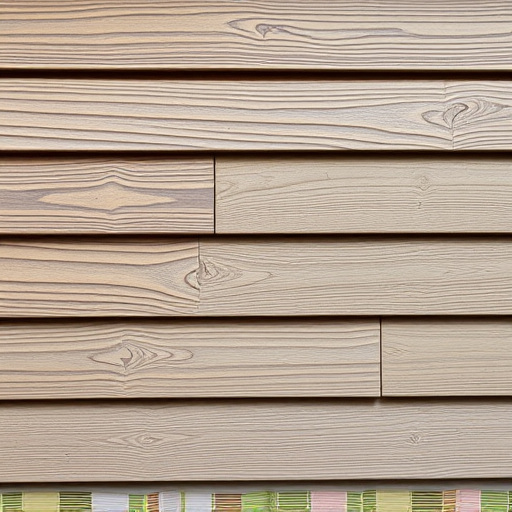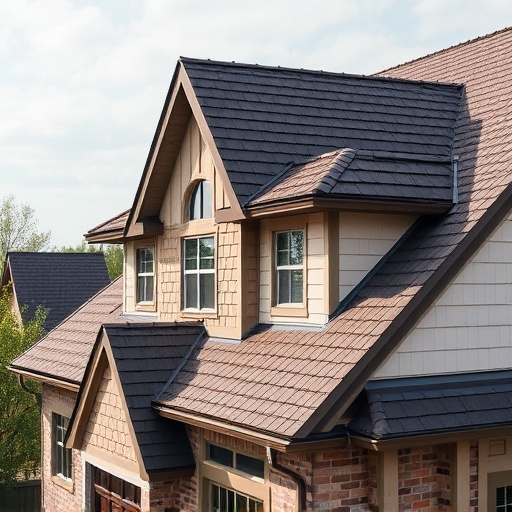Roof Replacement & Solar Panels: A Seamless Integration Guide
When replacing a roof, especially in residential areas, consider integrating solar panels for enhanc…….
Roof replacement is a critical aspect of building maintenance and renovation, involving the complete or partial substitution of a structure’s roof system. This process encompasses various materials, techniques, and considerations, ensuring both functional and aesthetic integrity for buildings worldwide. In this article, we embark on an in-depth exploration of roof replacement, delving into its historical roots, global impact, technological innovations, regulatory frameworks, and future prospects. By the end, readers will gain a comprehensive understanding of this essential building component and its profound effects on construction, sustainability, and economic growth.
Definition: Roof replacement refers to the process of installing a new roofing system or significant components of an existing one. It involves removing the old roof, preparing the underlying structure, and then applying a fresh layer or entirely new roofing materials and finishes.
Core Components:
Roofing Materials: These include asphalt shingles, metal panels, clay tiles, slate, rubber membranes, and more. The choice depends on factors like climate, architectural style, budget, and energy efficiency goals.
Underlayment: A protective layer installed beneath the roofing material to provide additional insulation, water protection, and a smooth surface for the new roof. Common underlayments are felt paper, synthetic sheets, or foam boards.
Flashings: Flashings are waterproof materials used around roof penetrations like chimneys, vents, and pipes. They ensure these areas remain sealed and protected from moisture intrusion.
Drip Edge: A flashing that runs along the perimeter of the roof, preventing water from running directly down the walls and providing additional protection where the roof meets the siding.
Historical Context:
Roofing techniques have evolved significantly over centuries, driven by technological advancements and cultural influences. From thatch roofs in ancient times to modern metal and energy-efficient materials, the art of roofing has adapted to meet changing needs. In the 20th century, mass production of asphalt shingles revolutionized roofing, offering an affordable and durable option for residential and commercial buildings alike.
Roof replacement is a universal necessity, yet its impact varies across regions due to differing climates, architectural styles, and economic factors.
| Region | Key Trends | Challenges |
|---|---|---|
| North America | Growing adoption of metal roofing, driven by aesthetics and energy efficiency. Increased focus on sustainable materials like cool roofs and recycled content. | Extreme weather events posing challenges to traditional roofing materials. |
| Europe | Strict building codes promoting high-performance roofs with better insulation and air tightness. Rising popularity of green roofs and solar panels integrated into roofing systems. | Availability and cost of specialized materials, especially in rural areas. |
| Asia Pacific | Rapid urbanization leading to higher demand for roof replacement services. Adoption of lightweight roofing materials to accommodate structural changes in buildings. | Lack of standardized building codes across countries, resulting in varied quality standards. |
| Middle East & Africa | Dominance of flat roofs with increasing adoption of solar panels. Growing awareness about energy-efficient and water-saving roofing solutions. | Arid climates posing challenges for moisture management and durability of roofing materials. |
The global roof replacement market is a dynamic sector, influenced by several economic factors:
Market Size: According to industry reports, the global roofing market size was valued at USD 152.6 billion in 2020 and is projected to grow at a CAGR of 4.8% from 2021 to 2028. This growth is driven by increasing construction activities, especially in emerging economies.
Investment Patterns: Private investments in roof replacement primarily come from homeowners, property developers, and commercial building owners. Government initiatives and public-private partnerships also contribute to significant infrastructure projects involving roof replacements on a larger scale.
Cost Analysis: Average roof replacement costs vary widely based on region, roof size, material choices, and complexity of the project. In North America, for example, the average cost ranges from $5,000 to $20,000, while in Europe, it can be slightly higher due to stricter building codes and specialized materials.
Technological innovations have played a pivotal role in enhancing roof replacement processes and improving the performance of roofing systems.
Advanced Roofing Materials: Researchers are developing high-performance materials like self-cleaning tiles, solar-reflective shingles, and lightweight composite panels. These materials offer better durability, energy efficiency, and reduced environmental impact.
Digital Design Tools: Computer-aided design (CAD) software and building information modeling (BIM) enable precise roof design, material estimation, and clash detection during the planning phase. This technology streamlines projects, reduces errors, and improves overall efficiency.
Drones and Remote Sensing: Drones equipped with high-resolution cameras and sensors can inspect roofs from above, providing detailed imagery for damage assessment and monitoring progress during installation. Remote sensing technologies also aid in material tracking and inventory management.
Smart Roof Systems: Integrated with the Internet of Things (IoT), smart roofs can monitor weather conditions, detect leaks, and optimize energy consumption through automated controls. These systems enhance building intelligence and enable predictive maintenance.
Roof replacement is subject to various policies and regulations that vary across jurisdictions, ensuring safety, quality, and sustainability in construction.
Building Codes: Local and national building codes dictate minimum standards for roofing materials, installation methods, and design considerations. These codes ensure structural integrity, fire resistance, and energy efficiency in buildings.
Environmental Regulations: Many countries have implemented strict guidelines for roofing materials to minimize environmental impact. These include regulations on waste disposal, volatile organic compound (VOC) emissions from paints and coatings, and the use of recycled content in products.
Energy Efficiency Standards: Governments worldwide are promoting energy-efficient roofing solutions through incentives and tax benefits. These standards encourage the adoption of reflective roofs, cool roofs, and solar panels to reduce energy consumption and greenhouse gas emissions.
Insurance Guidelines: Insurance companies often have specific requirements for roof replacement after damages caused by natural disasters or normal wear and tear. Policyholders may need to meet certain criteria to receive insurance claims for roofing repairs or replacements.
Despite its numerous benefits, roof replacement faces several challenges that require strategic solutions:
Cost and Funding: One of the primary hurdles is the high cost of materials and labor, especially in remote areas. Limited access to financing options for homeowners and developers can hinder projects. Governments can address this by offering subsidies or tax incentives for energy-efficient roofing and providing grants for roof replacement programs.
Weather and Climate Variability: Extreme weather events like storms, hurricanes, and heavy snowfall present challenges during roof replacement. Delays caused by adverse conditions can impact project timelines and budgets. Implementing agile project management techniques and having contingency plans in place can help mitigate these risks.
Labor Shortages: Skilled labor shortages in the construction industry affect roof replacement projects, leading to delays and increased costs. Addressing this issue involves investing in training programs, promoting apprenticeships, and improving working conditions to attract and retain skilled workers.
Sustainability Concerns: While the roofing industry has made strides towards sustainability, there is still room for improvement. The production and disposal of some materials contribute to environmental degradation. Industry stakeholders can work together to develop more eco-friendly products, promote recycling initiatives, and adopt circular economy principles.
In a densely populated urban area, a major commercial building embarked on a roof replacement project with a sustainable twist—the installation of a green roof system. The existing flat roof was replaced with a multi-layered system that incorporated soil, plants, and water management components. This transformation offered multiple benefits:
After a devastating hurricane struck a coastal community, local authorities launched an intensive roof replacement program to aid affected residents. This case study highlights the importance of rapid response and community engagement:
The roof replacement industry is poised for continued growth and innovation, driven by evolving technologies, shifting consumer preferences, and environmental concerns.
Sustainable Roofing: The demand for eco-friendly roofing solutions will rise, encouraging the development of materials with lower environmental impact, improved recyclability, and enhanced energy performance.
Integrated Building Systems: Roofs will become part of intelligent building systems, integrating sensors, automation, and connectivity to optimize energy efficiency, indoor air quality, and structural integrity.
Off-Site Manufacturing: Pre-fabricated roofing components and systems produced in controlled environments can reduce installation times, minimize waste, and improve overall project efficiency.
Digital Twin Technology: Digital twins of buildings, including their roofs, will enable predictive maintenance, enhanced safety measures, and better asset management throughout the building’s lifecycle.
Global Collaboration: Sharing best practices, technologies, and materials across regions can foster innovation and ensure that roof replacement projects meet the unique needs of diverse climates and cultures.
Roof replacement is an essential component of sustainable construction and urban development, offering solutions to climate challenges, enhancing energy efficiency, and contributing to the overall resilience of buildings. As the industry navigates the future, several key trends and strategic considerations will shape its trajectory: embracing sustainability, leveraging technology, ensuring skilled labor, and promoting global collaboration.
By addressing the challenges and capitalizing on opportunities presented in this article, stakeholders in the roofing sector can contribute to creating more durable, efficient, and resilient built environments worldwide. The ongoing evolution of roof replacement practices is a testament to humanity’s ability to adapt, innovate, and enhance our living spaces while respecting the planet we inhabit.
Q: How often should I replace my roof?
A: There is no one-size-fits-all answer. The lifespan of a roof depends on various factors, including material quality, climate, and maintenance history. As a general rule, asphalt shingles last 20-30 years, while metal roofs can last 40-60 years or more with proper care. Regular inspections can help identify signs of wear and tear earlier.
Q: What are the signs that I need to replace my roof?
A: Look out for missing or curled shingles, visible damage from storms or extreme weather, leaks, water stains on ceilings or walls, excessive granule loss (from asphalt shingles), and increased energy bills due to poor insulation. These indicators suggest potential issues with your roof that may require replacement.
Q: How can I reduce the cost of roof replacement?
A: Cost-saving strategies include choosing longer-lasting materials, getting multiple quotes from different contractors, considering off-peak installation times, and negotiating for discounts or packages. Additionally, taking advantage of tax incentives for energy-efficient roofing and insurance rebates after storm damage can help offset expenses.
Q: Are there any environmental benefits to roof replacement?
A: Absolutely! Roof replacement offers several eco-friendly advantages. It can reduce a building’s carbon footprint through improved insulation, lower energy consumption, and the adoption of cool roofs or solar panels. Additionally, using recycled materials and implementing green roofing practices contribute to more sustainable construction and reduced waste.

When replacing a roof, especially in residential areas, consider integrating solar panels for enhanc…….

Roof replacements are a strategic investment in energy efficiency, offering immediate comfort and lo…….